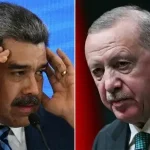
Last month’s OPEC meeting sent shock waves across the oil industry when the Gulf state members of OPEC opted to make the statement that they will be happy to see the oil price at $60 per barrel. This marked a new era in the oil price war where the Gulf state’s, and in particular Saudi Arabia’s oil rivals have kept their country’s growth and budget linked near or above $90-$100 per barrel. With OPEC’s meeting on 27th November 2014, Saudi Arabia came into spot light as the most influential player to control the oil prices. Furthermore, Saudi Arabia has refused to cut the crude oil production, hinting oil prices may slide below $60 per barrel. Let us analyze why the oil prices were reduced and what were the factors that contributed to its reductio
1) Oil Production & Weaker Economic Outlook
In the beginning of the year, oil prices went as high as $112 per barrel due to the Russia-Ukraine conflict and Russia’s threat to close oil and gas supply lines to Europe. Saudi Arabia has been producing 9 Million barrels per day till the month of July and have decided to produce 10 Million per day since then. Other OPEC Gulf countries have followed Saudi Arabia.
Another factor for reduction in crude oil prices in the market was economic slowdown in China. China manufacturing PMI gauge has fallen around 50, which has considerably reduced the crude oil demand in China; weaker economic growth of Europe and its inflation below 0.4 has added fuel to fire in demand for crude oil.
2) Battle for Market Share & Shale Oil Boom
Tax revenues generated from oil exports consist of a major portion of yearly government budgets for many oil producing countries. The higher the price the more budget can be allocated for infrastructure development and military expenditure budget etc. Lowering prices is not in the interest of any oil producing country but the new oil producing countries like USA, trying to compete with OPEC and taking over their market share has become a cause of concern. The US shale oil & gas boom and the media reports that USA will become the largest exporter of oil and gas has been a cause of concern for the OPEC members for some time now, but shale oil profits above $50- $75 per barrel and fracking method is quite expensive to extract oil. The move of OPEC members to reduce price, is to keep their market share of oil and prove to the world that shale oil boom is not a revolution but a bubble.
3) Arch Rivals
KSA’s arch rival Iran and Russia has suffered a lot due to the 40% reduction in crude oil prices. This reduction hurts Iran & Russia the most. Unlike Saudi Arabia whose cost of crude oil is around $5-$10 as per some analysts, Russia has budgeted crude oil profit at $100 per barrel while Iran at $90 per barrel. This significant reduction will have deep impact on their yearly budget and will hurt Russia and Iran’s economy.
4) Black Market Oil
Since the fall of Mosul- Iraq and the brutal takeover of oil rich territories of Syria and Iraq, ISIS started selling oil in the black market, with which they made $1-$3 million revenue per day. They sold oil at $40 per barrel and going as low as $20 per barrel. This reduction in oil prices will have a strong impact on the financial network of ISIS and will lure the ISIS oil buyers to buy from OPEC instead, which offers low risk and a relatively lesser price difference. It will in turn reduce the revenues of ISIS and starve it financially.
5) Conspiracy Theories Surrounding Drop in Oil Prices
The conspiracy theory that is circulating around this price reduction is that oil prices are deliberately kept down to punish Russia over Ukraine crisis. To survive, Russia has accepted gold against oil. US dollar is artificially being kept high and gold kept low for the sake of Russian cheap oil, however, Russia’s master stroke combined with Chinese reluctance to convert favourable trade surplus with US treasury bills spells trouble for the US. Either Oil will rise or dollar will fall.
This is bound to happen anyway with Russia along with Venezuela and Iran (which compromise 40% of world hydrocarbons) are no more pegged to US dollars. With China trying to protect their own interest and EU emphasizing on basket currency approach means serious hardship for US dollars, unless of course FED comes up with something new to protect the US dollar.
Research shows that Russian reserves are essential for global price stability. BRICS is likely to side with Russia, if it assures firm supply of hydrocarbons. Brazil and China have already hinted it to Russia.
It remains to be seen how this oil price war, started by OPEC rich oil producing members take shape in the coming weeks. Will it continue to stay below $60 as we saw oil prices touching $57 mark last Friday or will it shoot back to $80? All this has proven one point however; Saudi Arabia has played a vital role in policy making of oil prices and other OPEC members have agreed with Saudi Arabia’s decision.







